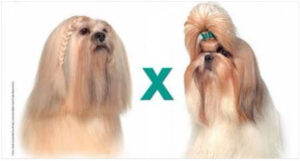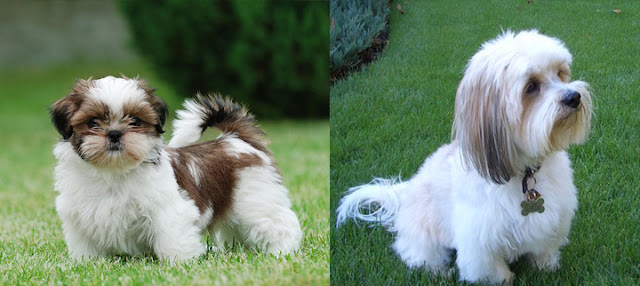Lhasa Apso and Shih Tzu: so alike and yet so different – When it comes to dogs, the two most confused breeds are exactly these: Lhasa Apso and Shih Tzu. Many people are even surprised when they realize that they are not the same breed.
The similarities are clear: large eyes, long and soft fur, small size, and colors that do not differentiate one breed from the other. But what about the differences, can you enumerate them?
The Origin
Confusions aside, the breeds have become prominent when it comes to companion dogs. But the origin of the two is the first of many differences that involve the two groups.
The Lhasa Apso appeared first. It was kept as a guardian in Tibet, serving as an alert dog. The Shih Tzu, on the other hand, appeared later, resulting from the crossbreeding of the Lhasa with other breeds – there is no consensus on which breeds, but some say the Pug is among them.
Unlike the Lhasa, whose function was to be an alarm dog, the Shih Tzu was created to be a companion dog, which leads us to the behavioral differences between them.
Behavioral Differences
As with any dog originally developed to be an alarm dog, the Lhasa doesn’t get along well with strangers. It is suspicious, barks, and takes time to build trust. On the other hand, the Shih Tzu, purely a companion dog, is more friendly with everyone around, wagging its tail for anyone who approaches.
This behavioral difference explains why people often say that the Shih Tzu is more outgoing, while the Lhasa is more reserved. In fact, the Lhasa is also quite outgoing – but only with those it knows. The Lhasa is more selective, wary, and arbitrary. The Shih Tzu is friendly, outgoing, and charming with everyone around. The Lhasa tends to choose one owner, to whom it is deeply attached and loving. The Shih Tzu is a dog oriented towards the entire family.
The Lhasa fulfills its alarm function. It spends time observing and doesn’t mind being alone. Sometimes it may seek attention from its owner, but most of the time, lying close to them and enjoying a good nap is enough.
As a pure companion dog, the Shih Tzu demands almost constant attention and care. It asks for affection, wants to be held, and never tires of interacting with everyone around.

Physically, they are similar. But is that true?
It is true that they have similarities. But once you discover the differences, it will be much easier to identify the two breeds.
The most striking difference is the muzzle. The Shih Tzu has an extremely flat, almost non-existent muzzle – remember that it possibly has a little bit of Pug in it? The Lhasa, on the other hand, has a narrower and slightly longer snout.
Of course, it is a bit more difficult to notice this detail with the coat – but it is still possible. The Lhasa also has slightly smaller and more oval-shaped eyes, while the Shih Tzu has larger and rounder eyes. The forehead is also different: the Lhasa has a straight forehead, while the Shih Tzu has a rounded one.
The coat cannot be differentiated by color – as it varies in both breeds. However, the Lhasa has a rougher and thicker coat, while in the Shih Tzu, it is finer and smoother.
In specimens that represent all the characteristics of each breed, these differences are clearly visible. The problem of identification becomes more difficult when dealing

